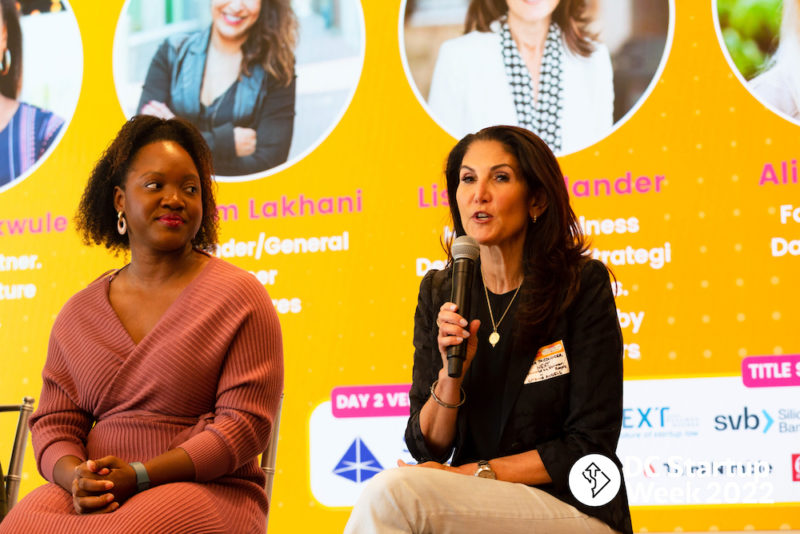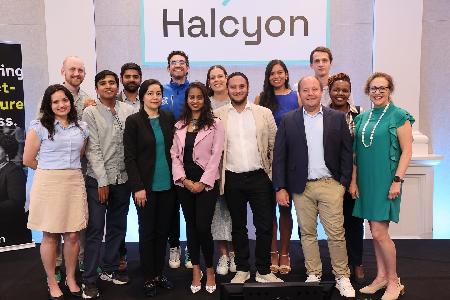The Smithsonian American Art Museum’s central Kogod Courtyard is normally a peaceful place. Small children run through the fountain that flows along the floor, museumgoers grab a snack or meal at the tables by the café or people talk quietly on the edges of ornamental beds. But for one weekend in early August, the courtyard was utterly transformed—loud, and completely packed with museumgoers and videogame consoles.
On August 5-6, the Smithsonian American Art Museum exhibited not only the art on its walls, but also filled its largest open spaces with new and classic video games. The SAAM Arcade brought together technologists, designers and drew in close to 20,000 museumgoers over the course of the weekend.
The event started in 2014, when it was originally referred to as the “Indie Arcade.” This year, organizers invited more than 40 professional and student game developers from all over the world to the event. Members of IGDA DC and the American University Game Lab help select indie games. MAGFest and the Entertainment Software Association Foundation are also partners on the event.
“Each year this event only gets bigger and better,” the Smithsonian’s Kaylin Lapan and Lauren Kolodkin said in a joint email interview. Lapan was organizer of the event, and Kolodkin assisted and coordinated volunteers. Originally the event was held only in the museum’s central courtyard. Now it has expanded to fill the whole museum.
#SAAMarcade final attendance: 19,880 #indiegame lovers! See you next year! pic.twitter.com/eFbzv2JD5j
— Chris Totten: Little Nemo and the Nightmare Fiends (@Totter87) August 10, 2017
The process of setting up the event and some of the decades-old technology has taught the organizers a thing or two on how to merge new and old technologies on a large scale. It’s also a chance to see how indie developers are taking gaming in new directions.
One such example was “The Awkward Steve Duology,” a full motion video game which presents small segments of video about a man who struggles with anxiety. The player must make choices throughout the course of the game that will help lower Steve’s anxiety, and each choice triggers a different section of video that either helps or hurts Steve.
Kolodkin and Lapan said the experience showed “how game developers are able to construct stories about personal experiences, like coping with severe anxiety… These narratives are then able to cultivate empathy in those who play them.”
The SAAM Arcade event is part of a larger relationship that the museum has with with the tech community. They said SAAM often hosts hackathons and Wikipedia edit-a-thons. Outside of the American Art Museum, other Smithsonian museums also engage with the tech community through programs like ArtLab+ at the Hirshhorn.
The organizers hope to be able to increase its interactions with the local tech community through additional events.
The Smithsonian also said it was one of the first museums to acquire video games as part of its permanent collection.
“Video games are part of our visual culture, and worthy of display as well as study at SAAM,” Stephanie Stebich, the Margaret and Terry Stent Director of SAAM, said in a statement.
The arcade event shows that SAAM doesn’t just study video games, they put them into practice, collaborating with local game devs and designers in the process.
Before you go...
Please consider supporting Technical.ly to keep our independent journalism strong. Unlike most business-focused media outlets, we don’t have a paywall. Instead, we count on your personal and organizational support.
3 ways to support our work:- Contribute to the Journalism Fund. Charitable giving ensures our information remains free and accessible for residents to discover workforce programs and entrepreneurship pathways. This includes philanthropic grants and individual tax-deductible donations from readers like you.
- Use our Preferred Partners. Our directory of vetted providers offers high-quality recommendations for services our readers need, and each referral supports our journalism.
- Use our services. If you need entrepreneurs and tech leaders to buy your services, are seeking technologists to hire or want more professionals to know about your ecosystem, Technical.ly has the biggest and most engaged audience in the mid-Atlantic. We help companies tell their stories and answer big questions to meet and serve our community.
Join our growing Slack community
Join 5,000 tech professionals and entrepreneurs in our community Slack today!





